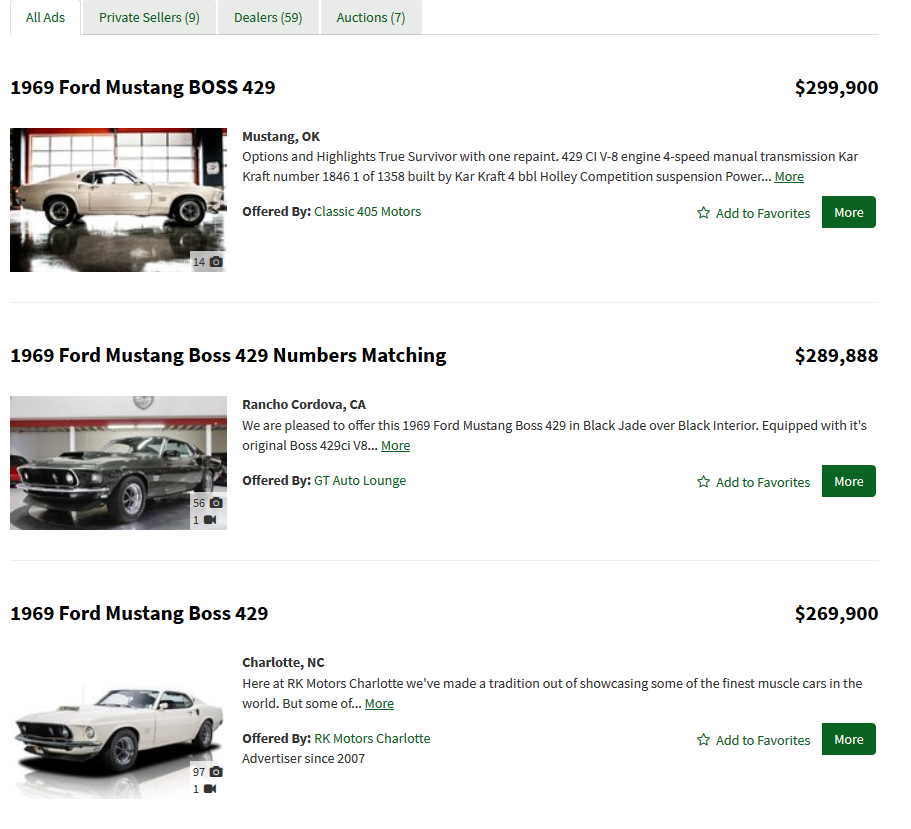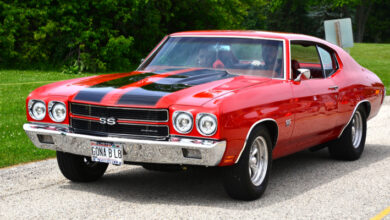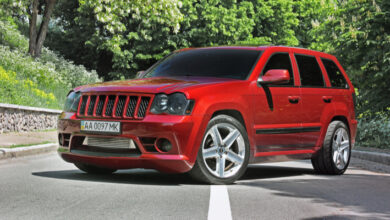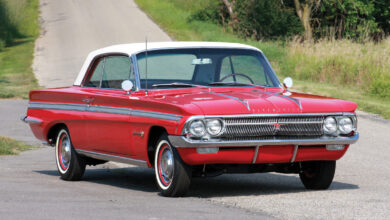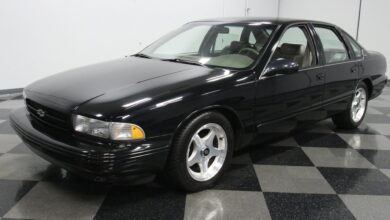1969 Mustang Boss 429
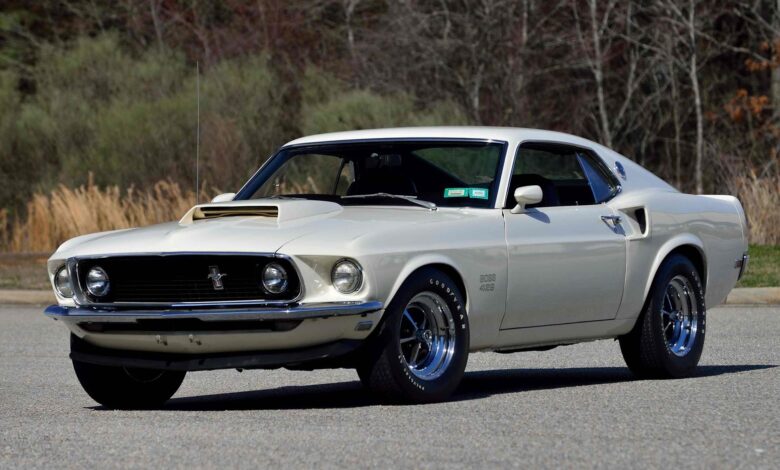
The 1969 Mustang Boss 429 is one of the most collectible and valuable production model Ford Mustangs. In total, 1359 Mustang Boss 429’s were produced.
For the 1969 model year, 859 were produced. Of these, the first 50 are considered the most valuable, followed by the S Code engines, and last but certainly not least, the T Code engines.
An additional 499 were produced in 1970, however, the body style is different as it used the Boss 302 suspension. As a result the 1970 Boss 429 doesn’t command as high of as a price tag among collectors as the 1969 Boss 429.
So what makes the Boss 429 so special? It’s starts with the engine. It’s a 7 liter 8 cylinder semi-hemi engine that was very conservatively rated at 375 hp at 5200 rpm and 450 lbft of torque at 3400 rpm.
The engine was born from Ford’s desire to build a motor that could compete in NASCAR against the Chrysler 426. This engine went into production and was sold to the general public due to the NASCAR requirement that a vehicle had to be produced and sold in a minimum quantity of 500.
Ford contracted Kar Kraft to turn the regular mustang coming off the line into th Boss 429. Because the 429 engine was so large, the front end of the Mustang had to be modified. The re-worked suspension included moving the shock towers and giving the front end an wider stance. The benefit of the new suspension and stance was better handling.
Production began in 1968 at the Kar Kraft assembly plant in Brighton, Michigan. All Boss 429’s have a KK production number, in addition to their Ford serial number.
The first 50 Boss 429’s are considered the most valuable, in part because they are a reflection of the work in progress of Kar Kraft refining the vehicle. For instance, the early models had battery mounting holes and a bracket under the hood, even though the battery had been moved to the truck to save on space and improve weight distribution.
These types of irregularities make these cars valuable, although it’s worth nothing that often the first cars in the production of a new model will have more mechanical and and structural problems than the models produced once the assembly line is running smoothly.
Only 5 colors were offered in 1969 including Wimbledon White, Raven Black, Black Jade, Royal Maroon, and Candy Apple Red. The only option for the interior was black. All featured color coded mirrors and a color coded functional hood scoop. The hood scoop was the largest of any Ford Mustang and was controlled by a lever next to the drivers right knee.
In addition to the 1969 Mustang Owners Manual, ford included a special Boss 429 owners manual that included instructions on starting the vehicle and operating the “Ram Air” hood scoop.
Boss 429 Engines S Code, T Code, A Code
Boss 429 enthusiasts will compare the 3 different variations of the 429 engine offered in 1969 and 1970.
S Code: The first 279 Boss 429’s to leave the factor were S Code cars. The S Code had zero smog or emissions equipment, featured a hydraulic camshaft, and NASCAR style crank, rods, and pistons. The connecting rods each weigh approximately 3 pounds. The S code cars also featured magnesium valve covers, and are said to be more powerful engines than the later variations.
T Code: The T code replaced the S Code engine mid-way through the 1969 model year. It had smog and emissions equipment and a lighter rotating mass designed to make the engine quicker revving.
A Code: Beginning in 1970, the A Code 429 engine was released. It featured a mechanical cam and had a lighter crank, and lighter rods, and piston.
1969 Mustang Boss 429 Production Numbers
In 1969, only 859 Mustang Boss 429’s were produced. Of these, the first 50 are considered the most valuable, followed by the S Code engines, and last but certainly not least, the T Code engines.
Hagerty Valuation
Hagerty currently values the 1969 Boss 429 through the following scale:
#1 Concours $391,000 #2 Excellent $301,000 #3 Good $200,000 #4 Fair $142,000
1969 Mustang Boss 429 Auction Records
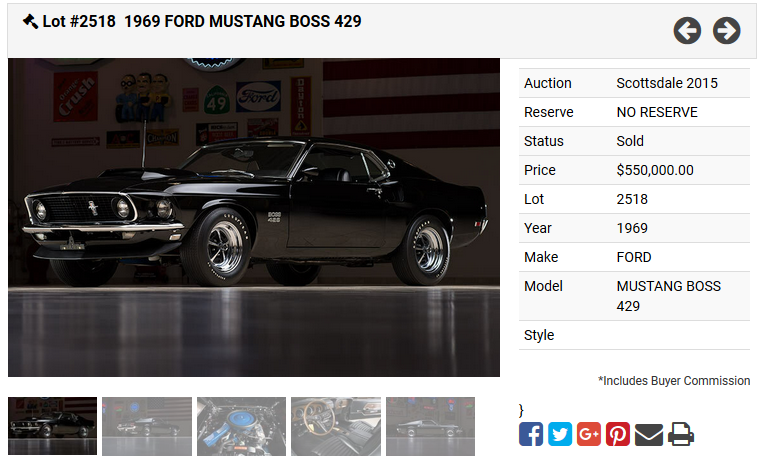
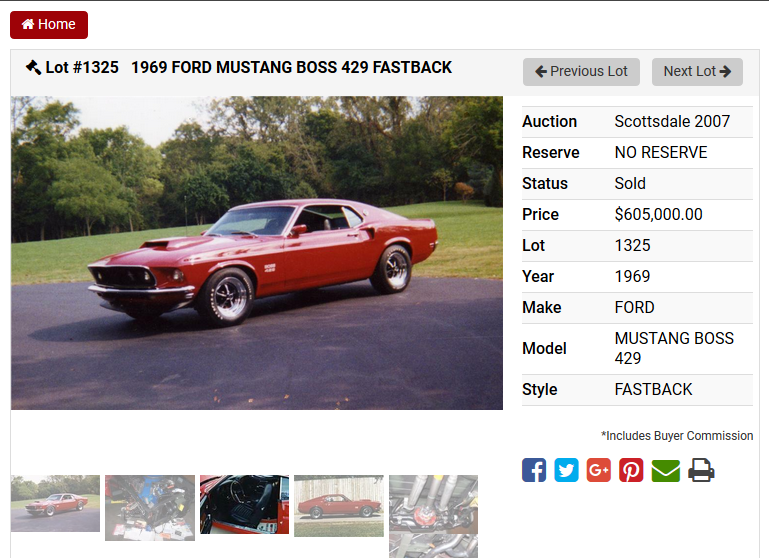
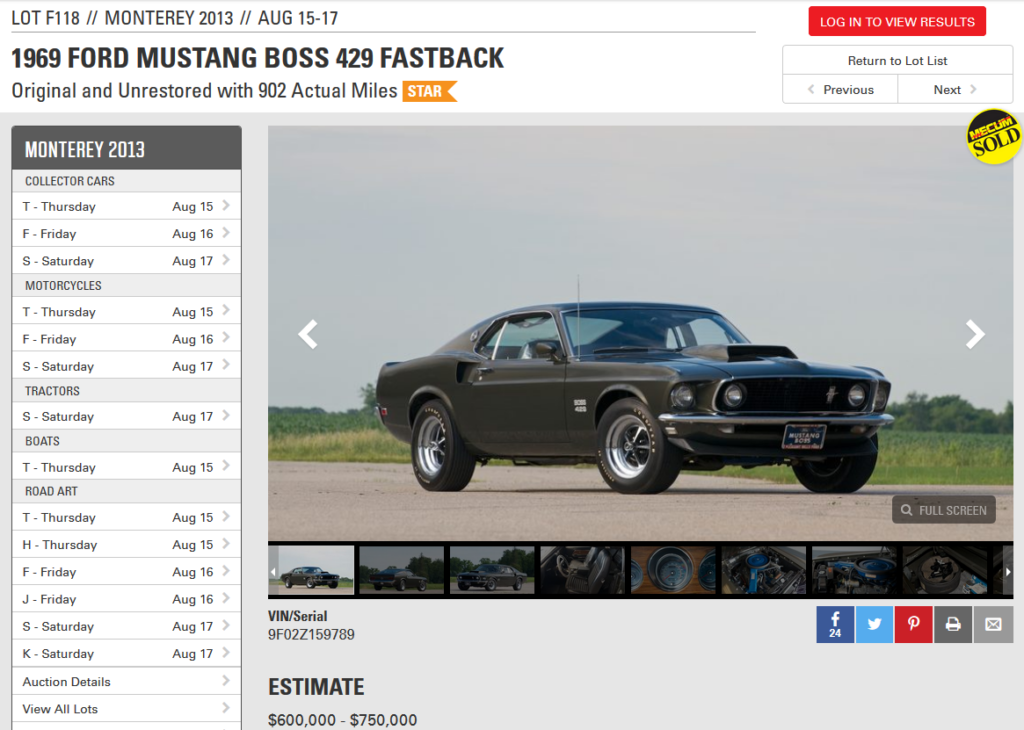
1969 Mustang Boss 429’s Currently For Sale
